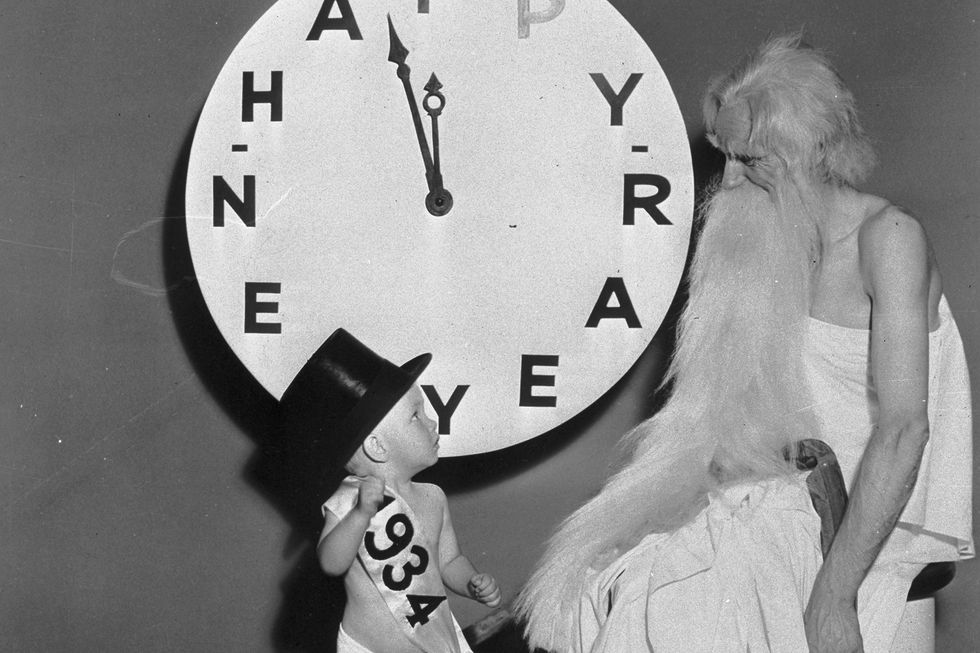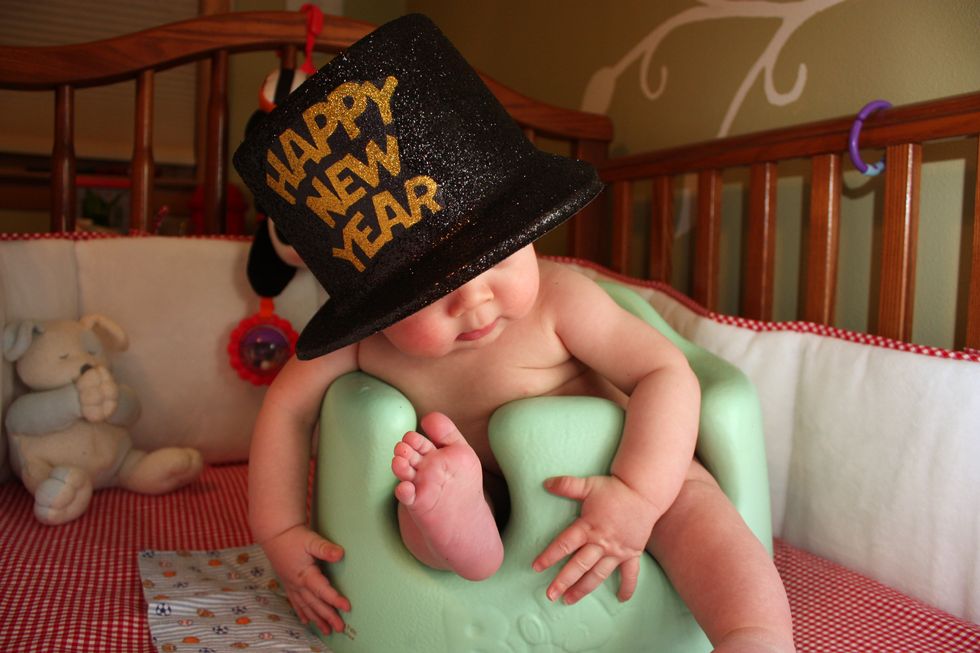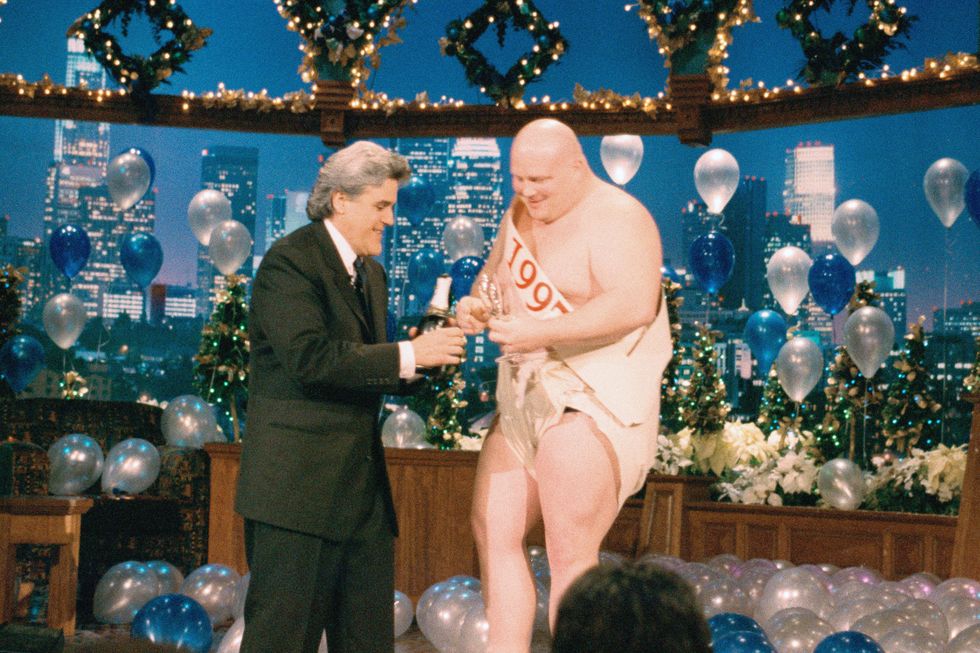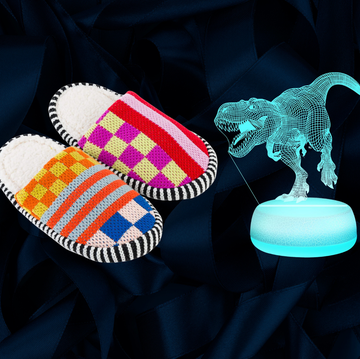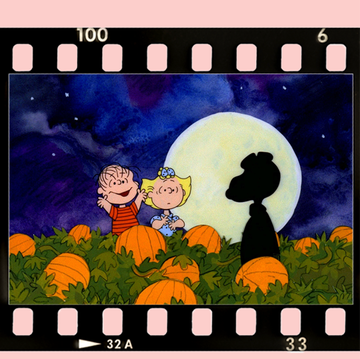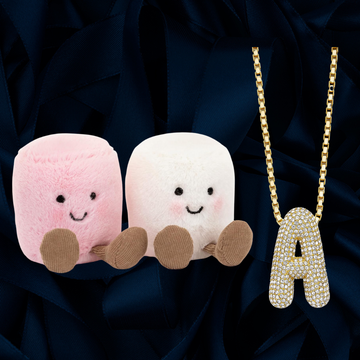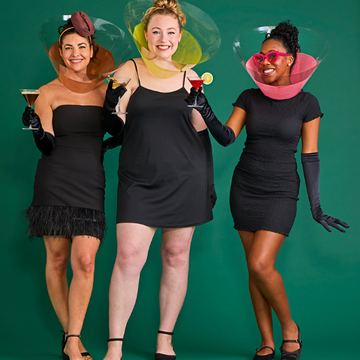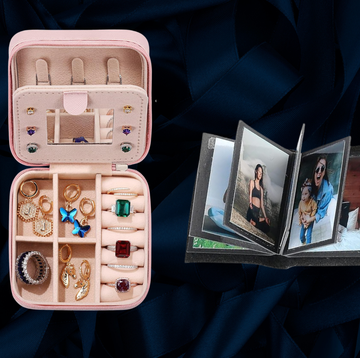It’s almost time to welcome the New Year — with fireworks, ball drops and bubbly galore! Among these beloved New Year's Eve traditions, one image stands out as the enduring symbol of the holiday: a baby wearing a top hat and sash, famously known as "Baby New Year." But what exactly is Baby New Year, and how did this charming symbol come to represent the start of a fresh year?
Baby New Year traces its roots back to ancient Greece, where it began as a celebration of renewal and rebirth. Over the centuries, it has evolved into a beloved holiday staple, embodying the promise of a bright and hopeful future. Curious about the origins of this age-old (and adorable) tradition? Here’s the fascinating story of how Baby New Year came to life — and became a cherished symbol of New Year’s Eve celebrations worldwide.
Who is Baby New Year?
Baby New Year is a beloved symbol of the start of a fresh year, representing the "rebirth" of one year into the next. Typically depicted as a male infant wearing only a diaper, a top hat and a sash, Baby New Year is often paired with Father Time, an elderly figure carrying a scythe and hourglass, symbolizing the passage of time. According to the tradition, Baby New Year grows older throughout the year, eventually transforming into Father Time by December. At that point, he passes on his timekeeping duties — and his hard-earned wisdom — to the next Baby New Year, born on January 1.
How did Baby New Year start?
According to History.com, the use of a baby as a representation of the new year actually has its roots as far back as 600 B.C. in ancient Greece. In celebrating the annual rebirth of Dionysus — the god of wine and fertility — with each new year, the Greeks had a tradition of parading around an infant in a basket throughout town to represent the god's birth. Early Christians then also began using the image of a baby to celebrate the new year, with the infant often depicting the religious figure of Baby Jesus.
Baby New Year then became secularized by newspaper cartoonists in the 19th century, most notably with a series of covers in the The Saturday Evening Post by Joseph Christian Leyendecker from 1907 to 1943. These covers featured a different drawing of a baby on every annual first-of-the-year issue, with each character often representing the spirit of that specific year.
What are some modern examples of Baby New Year?
Since its origins, Baby New Year has made countless appearances in modern pop culture. One of the most iconic portrayals is in the 1976 holiday special Rudolph's Shiny New Year, where Rudolph the Red-Nosed Reindeer teams up with Father Time to find the missing Baby New Year. The character has also been a staple in various New Year's Eve events, including Willie Nelson's concerts in Austin, which featured cameos by Baby New Year and Father Texas Time.
In New Orleans, Baby New Year became part of a unique tradition: for 16 years, the city celebrated with a giant papier-mâché baby atop a roof in Jackson Square. The baby was dropped alongside their iconic fleur-de-lis, a festive twist on Times Square's ball drop.
What are other traditions associated with Baby New Year?
In addition to its role as a mythical figure and pop culture icon, the title of "Baby New Year" is often bestowed upon real-life newborns, with many cities and towns honoring the first baby born each year. These lucky infants frequently receive media attention and, in some cases, special gifts from local hospitals and media outlets. Prizes can include gift baskets, certificates, saving bonds and even free diapers.
Hannah Jeon is an Associate Commerce Editor at Prevention, where she covers expert-driven commerce content for all things health, beauty, and wellness. Previously the Editorial Assistant at Good Housekeeping, she earned her bachelor’s degree in creative writing and psychology from Johns Hopkins University. When she’s not on the hunt for all the best products online, you can often find her trying out new food spots in New York City or clicking away behind a camera.

